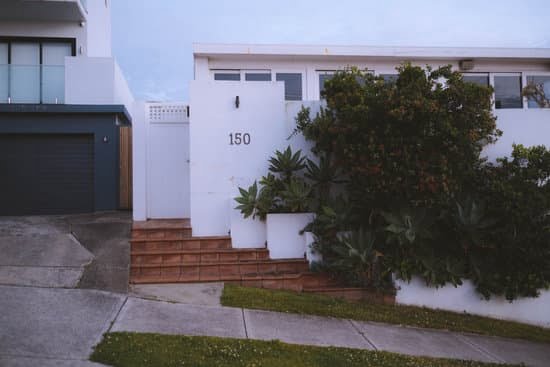Gardening landscaping ideas play a vital role in creating a beautiful and functional outdoor space. From enhancing curb appeal to providing a peaceful retreat, a well-designed garden landscape can significantly improve the overall aesthetic of a property. Planning and creativity are key in transforming an ordinary backyard into an oasis of natural beauty and tranquility. In this article, we will explore the importance of gardening landscaping ideas and how to bring them to life.
When it comes to planning your garden landscape, there are several factors to consider. Assessing your outdoor space and identifying your gardening goals is essential in creating a basic layout that complements your property. Factors such as sunlight, soil type, and climate should also be taken into account to ensure the success of your landscaping project. This article will provide valuable tips on how to plan your garden landscape effectively.
Furthermore, selecting the right plants for your garden is crucial in achieving a successful landscaping project. Choosing plants that are suitable for your specific climate and soil conditions is important for the long-term health and beauty of your garden. We will also highlight various types of plants and flowers that are well-suited for landscaping projects, helping you make informed decisions when it comes to plant selection.
In addition, integrating hardscape features such as patios, walkways, and retaining walls can add structure and functionality to your garden landscape. Tips for choosing materials and incorporating hardscapes into the overall design will be discussed in this article, providing you with inspiration for creating a harmonious outdoor space that reflects your personal style.
Planning Your Garden Landscape
When it comes to creating a beautiful garden landscape, planning is key. Before you dive into any gardening landscaping ideas, take the time to assess your outdoor space and determine your goals. Are you looking to create a serene and peaceful retreat, a vibrant flower garden, or a functional outdoor living area?
Consider factors such as sunlight exposure, soil type, and climate in your area. By understanding these elements, you can better tailor your garden design to suit the needs of your space.
Assessing Your Outdoor Space
Start by taking a walk around your yard and assessing the layout and features already in place. Note any existing trees, shrubs, or structures that you want to work around or incorporate into your design. Consider the natural flow of the space and how you can enhance it with landscaping elements.
Determining Your Gardening Goals
Think about what you want to achieve with your garden landscape. Are you looking for a low maintenance design that requires minimal upkeep? Or are you willing to put in the effort for a more intricate and lush garden? Understanding your goals will help guide your plant selections and overall design choices.
Creating a Basic Layout
Once you have assessed your space and determined your goals, it’s time to start sketching out a basic layout for your garden landscape. Consider how different areas of the yard will be used – for example, an entertainment area near the house or a quiet reading nook in a shaded corner. Take into account factors like foot traffic patterns, views from indoors, and privacy considerations when planning out your garden design.
By carefully planning out these key aspects of your garden landscape, you can set the stage for implementing gardening landscaping ideas that will bring beauty and functionality to your outdoor space.
Choosing the Right Plants
When it comes to creating a beautiful garden landscape, choosing the right plants is crucial. Not all plants thrive in every climate and soil condition, so it’s important to carefully consider which ones will work best for your specific outdoor space. Here are some tips for selecting the perfect plants for your gardening landscaping ideas:
- Assess Your Climate: Before choosing any plants for your garden, take some time to research which ones are well-suited for your local climate. Consider factors such as temperature, rainfall, and humidity to determine which plants will thrive in your area.
- Soil Conditions: Different plants have different soil requirements. Some may prefer well-draining soil, while others may thrive in moist or acidic soil. Conduct a soil test to determine the pH and nutrient levels of your soil, and choose plants that are compatible with these conditions.
- Native Plants: Utilizing native plants in your garden is a great way to ensure their success. Native plants are already adapted to the local climate and require less maintenance compared to non-native species. Plus, they provide important habitat and food sources for local wildlife.
In addition to considering climate and soil conditions, it’s also important to think about the overall design and aesthetic you want for your garden landscape. Consider factors such as color, height, texture, and bloom time when selecting plants to ensure a visually appealing and cohesive look.
Ultimately, the key to choosing the right plants for your garden landscape is thoughtful planning and research. By taking into account both practical considerations like climate and soil type, as well as aesthetic preferences and design principles, you can create a stunning outdoor space that brings joy and beauty year-round.
Creating Hardscapes
When it comes to creating a well-designed garden landscape, hardscaping plays a crucial role in adding structure and functionality to outdoor spaces. Integrating hardscape features such as patios, walkways, and retaining walls not only enhances the visual appeal of the garden but also provides practical elements for outdoor living. To start incorporating hardscapes into your garden landscape, it’s important to consider factors such as the layout, materials, and overall design.
One idea for integrating hardscapes into your garden landscape is to create designated outdoor living areas. This can include a patio for dining and entertaining, a cozy seating area with comfortable furniture, or even a fire pit for gathering around on cool evenings. By incorporating these hardscape features, you can extend the usable space of your garden and create inviting areas for relaxation and socialization.
In addition to planning out the layout of your hardscapes, carefully selecting materials is also an essential aspect of creating a cohesive and visually appealing garden landscape. Whether you prefer natural stone for a rustic look or sleek pavers for a more modern aesthetic, choosing the right materials can significantly impact the overall design.
Consider factors such as durability, maintenance requirements, and how the materials complement the existing elements in your garden. With thoughtful planning and creativity, you can seamlessly integrate hardscapes into your garden landscape design to achieve a functional and visually stunning outdoor space.
| Key Points | Information |
|---|---|
| Outdoor Living Areas | Incorporate different areas like patios or fire pits. |
| Material Selection | Consider factors like durability and maintenance needs. |
| Cohesive Design | Select materials that complement existing elements in the garden. |
Adding Water Features
When it comes to landscaping ideas, adding water features can bring a sense of tranquility and charm to any outdoor space. Whether it’s a small pond, a soothing fountain, or a serene water garden, incorporating water into your landscape design can create a focal point and enhance the overall ambiance of your garden.
One popular option for adding water features is the installation of a pond. Ponds not only add visual interest to the landscape but also provide a habitat for aquatic plants and wildlife. From pre-formed pond kits to custom-built designs, there are options to suit every budget and space. Additionally, fountains can be an excellent choice for smaller gardens, as they add the calming sound of flowing water without requiring as much space.
In terms of maintenance, it’s important to consider factors such as filtration and cleaning when selecting and installing water features in your garden. Proper maintenance will ensure that your water feature remains clean and functioning properly for years to come. With the right choice of water feature and proper maintenance, you can create a peaceful and tranquil atmosphere in your garden that will be enjoyed by both you and your visitors.
| Water Feature | Main Benefits |
|---|---|
| Pond | Provides habitat for aquatic plants and wildlife; adds visual interest |
| Fountain | Adds calming sound of flowing water; suitable for smaller spaces |
Seasonal Garden Maintenance
Maintaining a beautiful garden landscape requires regular care and attention throughout the year. By implementing seasonal garden maintenance, you can ensure that your outdoor space remains healthy, vibrant, and visually appealing. From pruning and watering to fertilizing and transitioning your garden from season to season, there are a variety of tasks that can help keep your landscape in top shape.
In the spring, it’s important to assess the condition of your garden after the winter months and prepare it for the growing season ahead. This may involve cleaning up any debris, pruning back perennials, and applying fertilizer to promote healthy growth.
As the weather warms up, be sure to water your plants consistently and monitor for any signs of pests or disease. It’s also a great time to add new plants or flowers to enhance your garden’s overall aesthetic.
During the summer months, maintaining proper hydration for your garden is crucial. Be mindful of watering frequency and pay attention to signs of heat stress in your plants. Regular weeding is essential to keep unwanted plants at bay, while deadheading flowers can encourage continuous blooming. Additionally, adding mulch around your plants can help retain moisture in the soil and regulate temperature.
As autumn approaches, consider preparing your garden for the cooler weather by removing any spent annuals and cutting back perennials. It’s also an ideal time to plant bulbs for spring bloom and divide any overcrowded perennials for healthier growth. Don’t forget about leaf management as trees begin to shed their leaves-consider collecting them for composting or using them as mulch.
In winter, protect your garden from harsh weather conditions by insulating delicate plants with mulch or covers. Monitor moisture levels in the soil during dry spells and be vigilant against potential damage from freezing temperatures. Use this time to plan and prepare for future planting projects or hardscape additions that will enhance your garden landscape when spring arrives.
By following these seasonal gardening maintenance tips, you can ensure that your outdoor space thrives year-round with minimal effort while enjoying the fruits of your labor from all angles of eco-friendly landscaping ideas.
Eco-Friendly Landscaping Ideas
Creating a sustainable and environmentally friendly garden landscape is not only beneficial for the environment, but it can also contribute to a healthier and more vibrant outdoor space. By incorporating eco-friendly practices into your landscaping projects, you can reduce your carbon footprint, support local ecosystems, and create a beautiful garden that thrives with minimal impact on the environment. Here are some suggestions for creating an eco-friendly garden landscape:
Using Native Plants
One of the most effective ways to promote biodiversity and support local ecosystems is by incorporating native plants into your garden landscape. Native plants are well adapted to the local climate and soil conditions, requiring less water, maintenance, and chemical inputs compared to non-native species. Additionally, native plants provide food and habitat for local wildlife, contributing to a more balanced and resilient ecosystem.
Composting and Rainwater Harvesting
Another important aspect of eco-friendly landscaping is reducing waste and resource consumption. Composting organic waste not only diverts materials from landfills but also produces nutrient-rich compost that can be used to enrich the soil in your garden. Rainwater harvesting is also an efficient way to conserve water resources by collecting rainwater for irrigation purposes. By implementing these practices, you can reduce the need for synthetic fertilizers and excessive water usage while enriching your garden soil naturally.
Reducing Chemical Use
Minimizing the use of chemical pesticides, herbicides, and fertilizers is essential for creating an eco-friendly garden landscape. Instead of relying on harsh chemicals, consider using natural pest control methods such as beneficial insects or companion planting. Organic fertilizers made from compost or other natural sources can provide essential nutrients to your plants without harming the environment. By reducing chemical inputs in your landscaping practices, you can protect local waterways, wildlife, and soil health.
By implementing these eco-friendly gardening landscaping ideas in your outdoor space, you can create a beautiful and sustainable garden landscape that supports the environment while providing enjoyment for years to come. Whether you’re starting from scratch or looking for ways to enhance your existing garden, making environmentally conscious choices will benefit both your outdoor space and the planet as a whole.
Budget-Friendly Landscape Design
Creating a beautiful garden landscape doesn’t have to break the bank. With some creativity and resourcefulness, it’s possible to design a stunning outdoor space on a budget. Here are some tips and ideas for budget-friendly landscaping:
- DIY Projects: One way to save money on landscaping is by taking on do-it-yourself projects. Whether it’s building a raised flower bed, constructing a pergola, or creating your own pathway, there are plenty of DIY landscaping projects that can add charm and functionality to your garden without costing a fortune.
- Plant Propagation: Instead of purchasing fully-grown plants from the nursery, consider propagating plants from cuttings or dividing existing plants in your garden. This not only saves money but also allows you to expand your garden with plants that are already well-adapted to your local climate and soil.
- Affordable Materials: When it comes to hardscapes and other landscaping materials, there are cost-effective options available. For example, instead of expensive natural stone for a patio or walkway, consider using concrete pavers or gravel. Look for sales at local home improvement stores and inquire about discounted or clearance items that can be used in your landscape design.
By combining these budget-friendly strategies, you can create a beautiful garden landscape that reflects your personal style and enhances the overall appeal of your property without breaking the bank. With planning and creativity, it’s possible to achieve stunning results while staying within your budget. So don’t let cost hold you back from turning your gardening landscaping ideas into reality.
Conclusion
In conclusion, gardening landscaping ideas can truly transform the outdoor space of any property, creating a beautiful and inviting environment for homeowners and visitors alike. By carefully planning the layout, selecting the right plants, incorporating hardscapes and water features, and implementing eco-friendly practices, it is possible to create a stunning garden landscape that reflects the unique style and personality of the homeowner.
Embracing seasonal maintenance and budget-friendly design options also ensures that the garden landscape remains vibrant and well-maintained year-round.
For those who are eager to bring their garden landscape to life, there are plenty of resources available to guide them in this endeavor. From online tutorials to local gardening clubs and workshops, individuals can seek inspiration and valuable advice to help them plan and implement their landscaping ideas. Furthermore, visiting botanical gardens or attending garden shows can provide homeowners with even more ideas for designing their outdoor spaces.
Ultimately, the key to creating a successful garden landscape lies in passion, creativity, and patience. By embracing these principles, homeowners can take pride in their beautiful outdoor havens and enjoy the many benefits that come with having a well-designed garden landscape. So why wait? It’s time to roll up our sleeves and start turning our gardening landscaping ideas into reality.
Frequently Asked Questions
How Do I Plan My Garden Landscape?
When planning a garden landscape, it’s important to consider factors such as the climate, soil type, and sunlight exposure in the area. Start by creating a rough sketch of your yard and identify any focal points or areas for potential landscaping features like flower beds, trees, or pathways.
Consider the colors, textures, and heights of plants to create a visually appealing design.
What Is the Most Low Maintenance Landscaping?
The most low maintenance landscaping typically involves using native plants that are well-suited to the local climate and soil conditions. These plants require less water, fertilizer, and pesticides compared to non-native species.
Additionally, choosing hardy plants that can withstand various weather conditions and minimal upkeep can help reduce maintenance efforts. Installing a drip irrigation system and using mulch can also help conserve water and reduce weed growth.
What Are the 7 Types of Landscape?
The 7 types of landscape are mountainscapes, desertscape, cityscape, countryscapes, seascapes, skyscapes, and hardscapes. Each type of landscape has its own unique characteristics and elements that influence both natural and man-made environments. Mountainscapes feature rugged terrain with diverse vegetation, while desertscape emphasizes the use of drought-resistant plants.
Cityscapes showcase urban settings with architectural structures and bustling streetscenes while countryscapes highlight rural areas with open fields and farmsteads. Seascapes capture coastal views with sandy beaches or rocky cliffs while skyscapes emphasize the ever-changing beauty of the sky through clouds or celestial events. Finally, hardscapes include non-living elements like pathways, patios, or retaining walls that complement the overall landscape design.

Welcome to my gardening blog! I am passionate about plants and enjoy sharing my knowledge and experiences with others. In this blog, I will write about everything related to gardening, from tips on how to get started to updates on my own garden projects.





